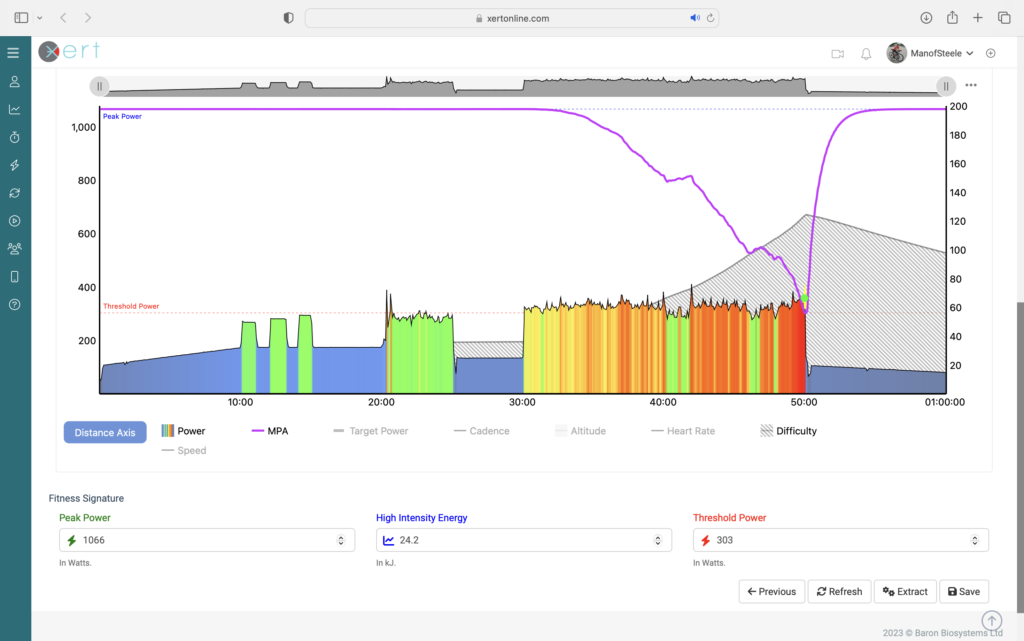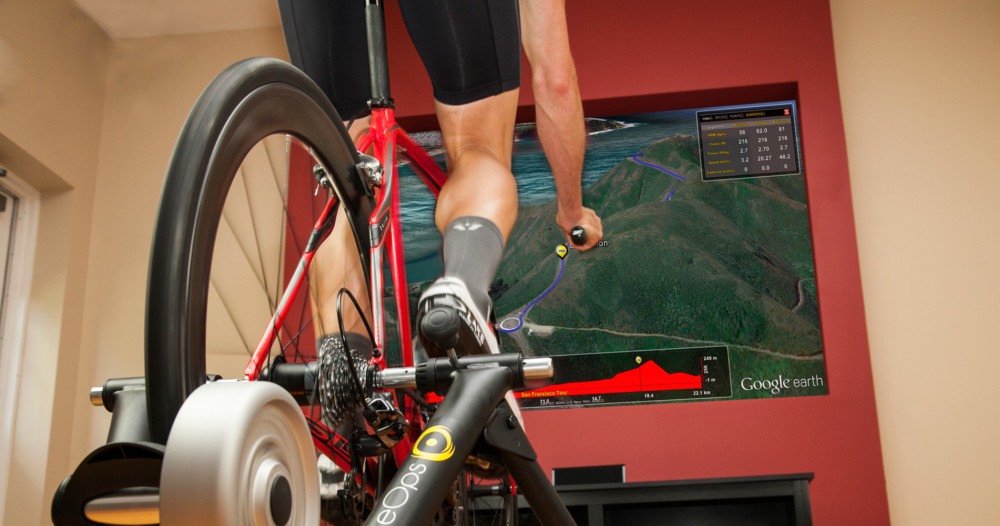Fitness Testing: A New Approach
For many athletes, fitness testing is a dreaded part of their training routine. The questions loom large: “Am I improving?” or “Do I need to change my workout targets?” Fitness tests can often be mentally and physically taxing, and finding an accurate way to estimate your fitness without having to suffer through a prolonged test is important. Traditional methods like FTP tests can be challenging – your FTP may fluctuate by 30-40 watts over the course of a season, and accurately assessing it is key to making the most of your workouts, whether you’re in peak form or rebuilding your fitness at the start of a new season.
Traditional Testing Methods vs Xert
Traditional FTP tests typically involve long, strenuous time-trial efforts, sometimes lasting up to an hour. While these provide valuable data, many athletes struggle with the mental and physical challenges of these tests. The more common method for FTP estimation is the 20-minute FTP test, but it requires careful pacing – too hard, and you risk burning out too early; too easy, and you risk underestimating your true capacity. More recently, some athletes have turned to 8-minute or FTP ramp tests. Even with these tests, your FTP is often just a rough estimate of the power you can sustain for the test duration.
“Throughout this hour, the longest of my career, I never knew a moment of weakness, but the effort needed was never easy. It’s not possible to compare the Hour with a time trial on the road. Here, it’s not possible to ease up, to change gears or the rhythm. The Hour record demands a total effort, permanent and intense, one that’s not possible to compare to any other. I will never try it again.”
– Eddy Merckx
Xert’s Approach to Fitness Testing
Xert uses a radically different method for determining your fitness: we leverage regular activity data, using Maximum Power Available (MPA) analysis to extract your fitness signature. Unlike traditional testing, Xert’s system looks at the maximal efforts you achieve during your everyday training – whether during a tough group ride or a competitive event – and estimates your Threshold Power, High Intensity Energy, and Peak Power.
MPA Analysis and Fitness Signature Extraction
Instead of relying on specific tests, Xert automatically extracts your fitness signature based on real-world data. Whether you perform a specific fitness test or simply upload data from your rides, the Xert system can use periods of maximal effort to calculate your fitness. The key is in identifying the points of maximal effort and applying a regression algorithm to estimate your signature accurately.
For example, consider this 20-minute FTP test data:

- The athlete’s MPA (purple line) starts at their peak power and slowly drops as the athlete fatigues
- The multi-coloured line represents the athlete’s actual power during the test, which eventually matches their MPA at the point of failure (green diamond).
- The fitness signature derived from this test shows Threshold Power = 303 W, High Intensity Energy = 24.2 kJ, and Peak Power = 1066 W.
Now, let’s look at a hard group ride:

- As the ride continues, the athlete’s power fluctuates near their MPA, particularly during tough sections.
- When the power reaches their MPA, the athlete has been pushed to their limit and is unable to continue without recovering.
- This group ride data can then be analyzed by Xert, providing a fitness signature that matches the athlete’s abilities without requiring any formal FTP tests
Using Regular Activity Data for Signature Extraction
Xert makes fitness testing easy by analyzing your regular activities. When you upload your ride data, Xert performs signature extraction automatically.
Here are some key benefits of using Xert for fitness testing:
- Maximal Effort Analysis: You don’t need to schedule a specific test to track your fitness. As long as your activity data contains occasional maximal efforts, Xert can track & update your fitness signature.
- No Need for Pre-planning: You don’t need to know your current fitness levels to set your workout pace. Xert learns from your efforts and adjusts your entire fitness signature accordingly.
- Variable Efforts: You can include activities with varying intensity, including periods of rest.
- Full Fitness Signature: Xert can determine your Threshold Power as well as your High Intensity Energy (HIE) and Peak Power (PP)
- Ongoing Fitness Monitoring: Track your fitness on a daily basis, as long as your activities contain maximal efforts.
- No Need for Traditional Testing: If your activities naturally include periods of maximal effort, you can forgo traditional tests altogether!
A Simple Xert Test Protocol
If you prefer to follow a structured testing protocol, Xert offers an easy and effective method for testing your entire fitness profile. Here’s a simple process:
- Warm Up: Warm up however you like – even a few hard efforts to prepare yourself
- Generate Fatigue: Start by reducing your MPA. If using Xert EBC or ConnectIQ, try to bring MPA down to ~ 400W above your FTP. If your threshold power is 250 Watts, try to bring MPA down to 650 W. Feel free to take short breaks as needed.
- Do a Maximal Effort: This is the toughest part of the protocol. Find a slight uphill, shift to a hard gear, and push yourself as hard as you can. Stay in a steady pace without needing to shift gears.
- Rest and Repeat: Take a brief rest before repeating the maximal effort to ensure you get your best possible result.
- Rest for 10 Minutes: Allow 10 minutes or until your MPA is nearly fully recovered.
- Peak Power Sprints: Perform 4-5 peak power sprints for 10-15 seconds with a couple of minutes rest between them. Aim to achieve the highest sprint power you can – these sprints should represent your peak power. On your last sprint, go all-out for around 20 seconds, if you can!
- Upload to Xert: Once complete, save and upload the activity to Xert and check for a fitness Breakthrough!
Final Thoughts
With Xert’s unique approach to fitness testing with real-world data, you can accurately track your fitness progress without the need for long, exhaustive tests. By using your regular activities, Xert provides a more flexible and realistic way to monitor your fitness levels and make sure you’re on track with your training goals! Happy Xerting!





